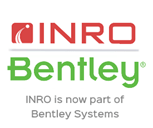The development and application of a land use, transport and economy interaction model
Henry Le, Finn Gurry, Michael Byrne, Reza Gharibnavaz, Neville Wood & James Lennox
AECOM, Arup, Infrastructure Victoria, Department of Transport Victoria & Victoria University (CoPS)
This presentation was delivered at the 2021 Online Conference Series and until October 2022 is only available to registered delegates and Content Access Pass holders via Interchange. For information on accessing this and other presentations please review the Content Access Pass options.
ABSTRACT
Governments around the world need to assess the benefits of transport projects to justify and prioritise investment given constrained funding. It is imperative for governments to have tools that can estimate the true benefits and impacts of investments in significant transport projects.
Traditionally, the benefits of a transport project have been estimated by using a transport model, assuming fixed land use for the base and project case in future. However, this approach cannot measure the impact of land use change as residents and businesses relocate to take advantage of lower travel and/or freight costs resulting from implementation of the project. Consequently, the benefits of the project may be under- or over-estimated, depending on its position within the transport system and how it would potentially reshape land use patterns in future. In order to overcome this drawback in existing models, this presentation discusses the development of a land use, transport and economy interaction model for the state of Victoria, Australia (VLUTI), by integrating the Victorian Integrated Transport Model with a Spatial Computable General Equilibrium model, which simulates land use and economic interactions across the whole state, and considers the costs of commuting travel, consumption travel, business travel and freight transport.
The presentation will discuss an application of the VLUTI by looking at the impact of a hypothetical transport project on land use changes and differences in the conventional transport benefits under static and dynamic land use scenarios. In the static method, the land use in the project case is unchanged from the base case. In the dynamic case, the land use in the project case is endogenously adjusted within VLUTI. It will also present a method to correct, in the dynamic case, the benefits as estimated by the rule of a half, which usually assumes static land use.
Author(s)
Henry Le | AECOM
Henry Le is a Technical Director in AECOM with a PhD in Transport and Traffic Engineering from Monash University. He started his career with VicRoads, and then moved to the Land Transport Authority of Singapore responsible for the development of the Strategic Transport Model for the island. Since joined AECOM, he has been responsible for the development of strategic transport models throughout Australia and overseas. Henry was the winner of the 2014 AITPM Excellence Award in Transport and Land Use Modelling, and the Janet Brash Award for the best project in 2014.
Michael Byrne | Arup
Michael Byrne is currently leading Arup's strategic transport modelling team in Melbourne. He has played a key role in the development of Infrastructure Victoria's LUTI modelling efforts, coordinating the assessments that will inform the state's updated infrastructure strategy. Michael has also contributed to the design and development of a number of agent-based models, including the Melbourne Agent-Based Model, efforts in the UK and most recently a New Zealand agent-based model for the Ministry of Transport. He has a keen interest in data analytics, software engineering and simulation.
Neville Wood | DoT VIC
Neville Wood is the Manager Modelling Development of the Transport Analysis and Modelling team at the Department of Transport Victoria. Neville is responsible for the on-going development, enhancement and maintenance of the Victorian Integrated Transport Model (VITM), which is used to support and evaluate transport policy, planning and business case projects in Victoria. Neville is currently leading the development of VITM2 using an activity based modelling approach.
Finn Gurry | AECOM
Finn Gurry is a Transport Modeller in AECOM’s Infrastructure Advisory group, based in Melbourne. Prior joining AECOM in 2019, Finn had worked in various analytical roles in the fields of Shipping and Market Research. Since joining AECOM he has been involved in multiple types of projects, including the development and application of the Victorian Land Use Transport Interaction model.
Reza Gharibnavaz | Infrastructure Victoria
Reza Gharibnavaz is a Senior Economist at Infrastructure Victoria. He obtained his PhD in Applied Economics from Latrobe University in 2013, and is currently working a part of the economics and modelling team responsible for the development of VLUTI and apply the model to study the economic and land use impact of long term infrastructure projects in Victoria. As part of Infrastructure Victoria’s economic and modelling team, he has contributed to assessing and measuring the impacts of infrastructure reforms and proposals in the transport sector, as well as supported the provision of economic analysis and advice on broader infrastructure matters.
James Lennox | Victoria University (CoPS)
Dr James Lennox is a Senior Research Fellow at Victoria University’s Centre of Policy Studies (CoPS). His applied research addressing a range of economic and environmental issues has been published in international peer-reviewed journals including Energy Economics, Economic Systems Research and Tourism Economics. At CoPS, Dr Lennox has pioneered the development and application of large-scale computable spatial general equilibrium (SCGE) models in Australia. He has worked extensively with the Department of Premier and Cabinet, New South Wales to model the spatial economic impacts of Faster Rail and with Infrastructure Victoria on modelling supporting their 30 Year Strategy Update.












